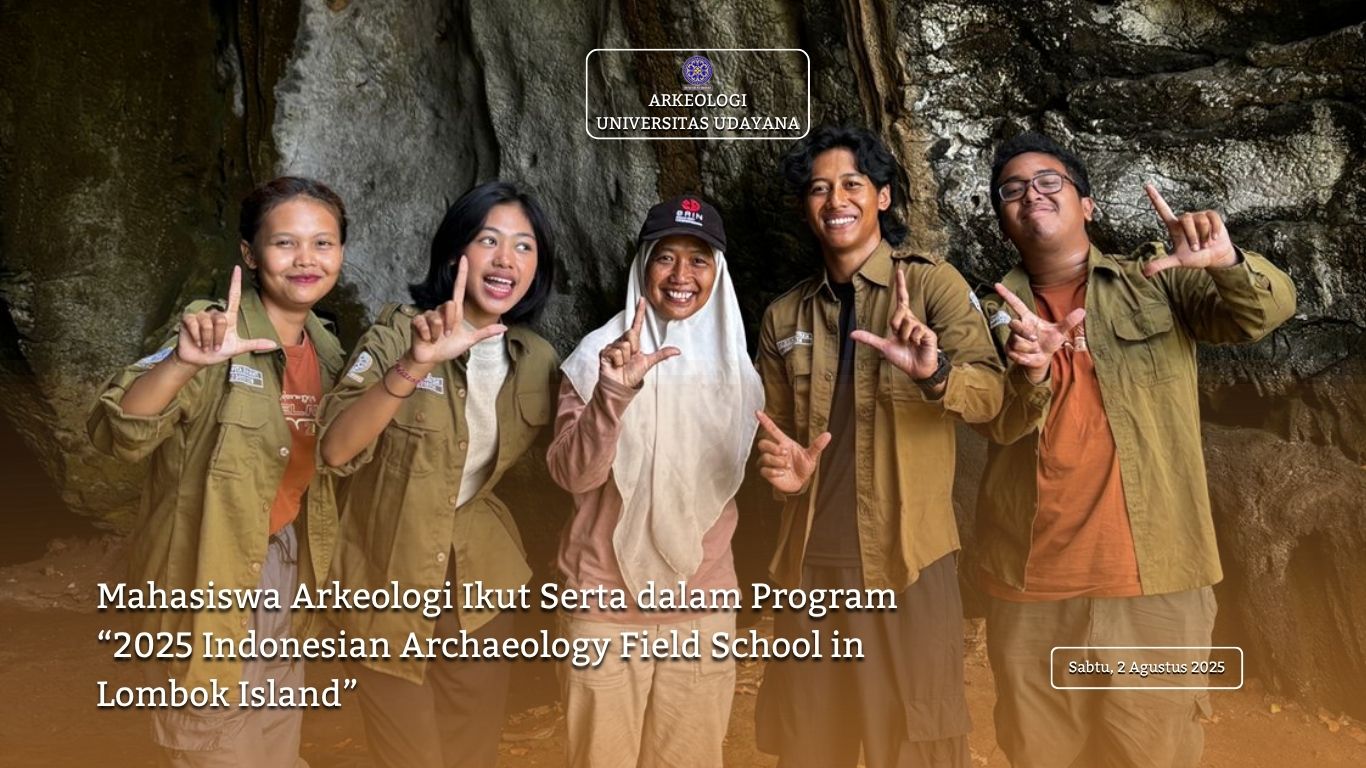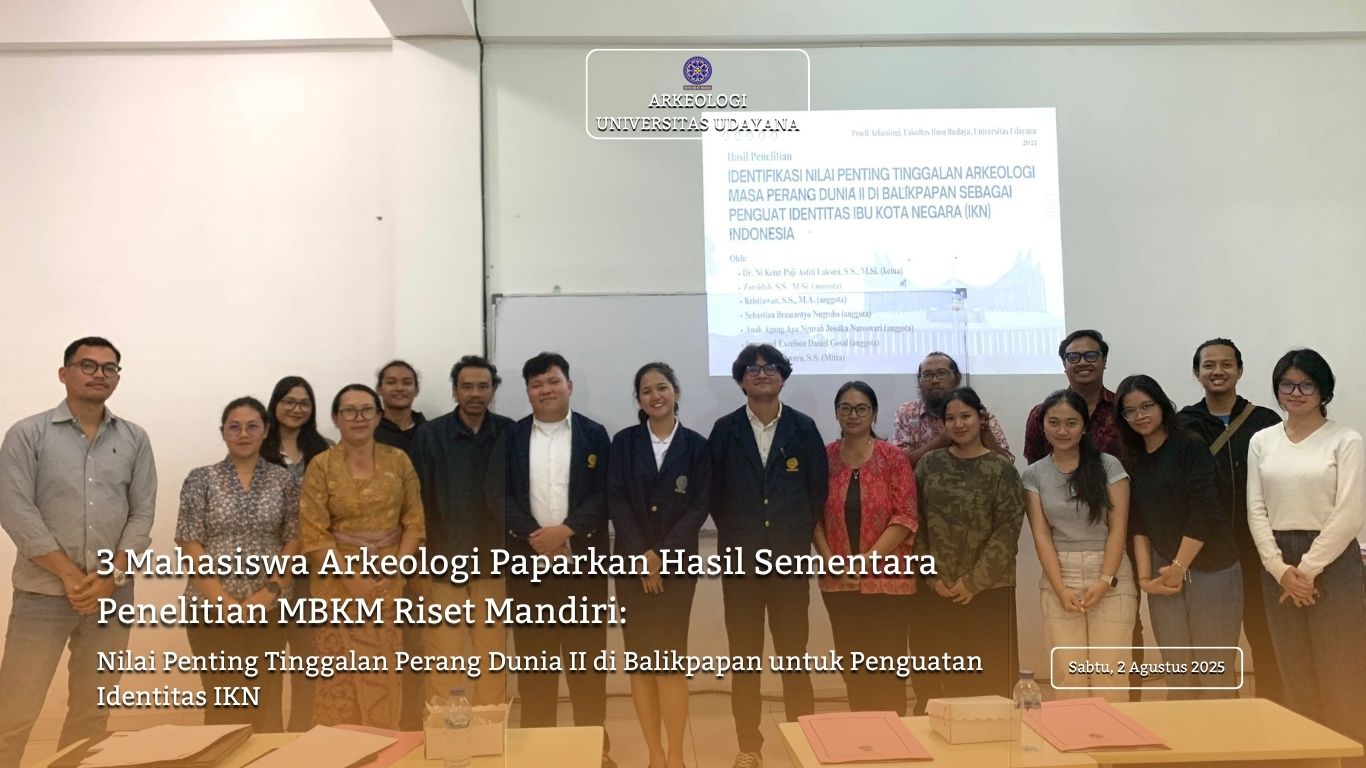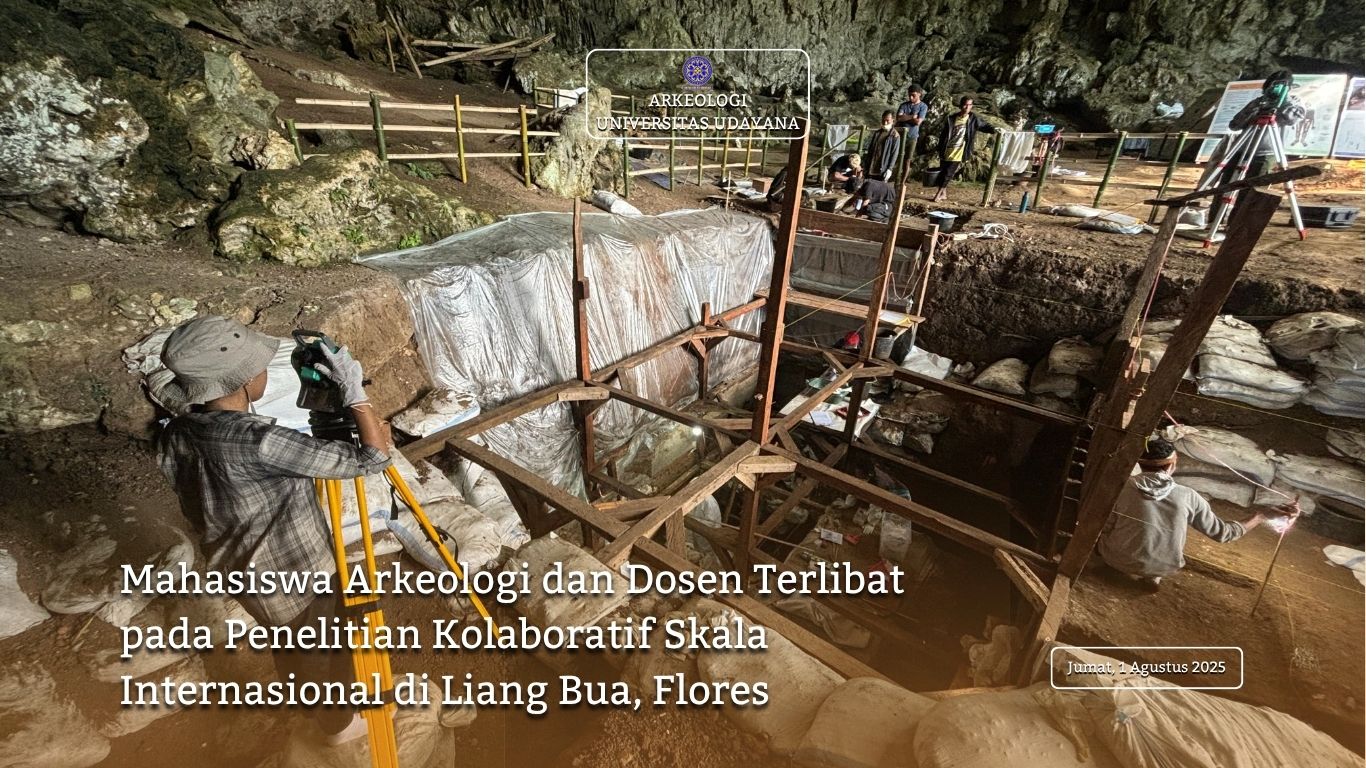PRODI ARKEOLOGI UNUD MENYELENGGARAKAN KULIAH UMUM BERSAMA PEMBUAT DOKUMENTER DAN FILMMAKER AMERIKA-BELANDA
Denpasar – Archeology Study Program, Faculty of Cultural Sciences, Udayana University held a public lecture entitled 'The Imperfect Model: Cultural Heritage in The Age of Digital Reproduction’ which was held at the Poerbatjaraka Building, Faculty of Cultural Sciences, Udayana University on February 28 2023. The speakers from this public lecture were quite interesting, namely documentaries andfilmmakerwho came from America and the Netherlands named Kel O'Neill and Eline Jongsma. In its implementation, this public lecture was guided by Dr. Drs. I Nyoman Wardi, M.Sc. lecturer in the Archeology Study Program at Udayana University.
The event was opened with remarks from Dr. Ni Ketut Puji Astiti Laksmi, M.Sc. as the Coordinator of the Archeology Study Program, Udayana University and continued with a material presentation session by speakers with Kel O'Neill as the main speaker. In this public lecture, he conveyed the sophistication of today's technology in an effort to reconstruct the past. Several attempts have been made by O'Neill and Jongsma to study the past in more detail using the help of today's technology, such as the application of photogrammetry to various relics, the use of AI (Artificial Intelligence) on a photo to get an overview of conditions and people in the past, then also convert the image data into animation.
In addition, they make documentaries using special cameras that can record in 360° otherwise known as VR technology (Virtual Reality) where the audience seems to be in that place and can imagine and feel the situation there. O'Neill and Jongsma explained that the results obtained from the reconstruction effort looked quite good, but of course they were still imperfect and not exactly the same as the original state, so they said that the results were 'the imperfect model’ and technology will continue to evolve over time so nothing will ever be perfect. Even so, these efforts are very helpful for archaeologists in carrying out their research.
The presentation of the speakers was light and interspersed with jokes, making the participants enjoy this public lecture session. The enthusiasm of the participants can also be seen from the many interesting questions asked to the two speakers. One of them is the question regarding the purpose of making his works that intersect with history, archeology, and technology. O'Neill and Jongsma replied that their work was a form of self-expression and that it had no particular purpose or purpose, other than their fascination with art and the past.
By holding this public lecture, it is hoped that students of the Udayana University Archeology Study Program can apply and develop the knowledge gained to advance archeology in the future and help foster interest and concern for common people in archeology, particularly in relation to photogrammetry using AI and VR.




FACULTY OF HUMANITIES